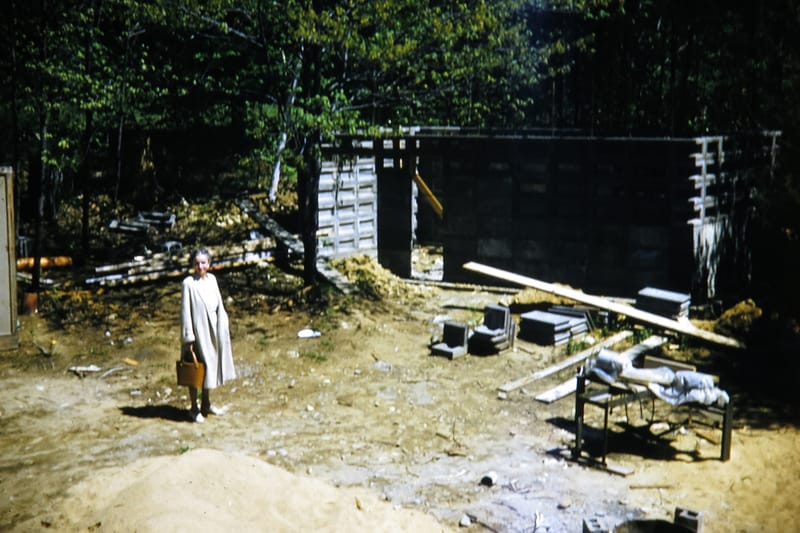Historic, conservation projects across NH awarded $3.7M in LCHIP grants
A dozen significant historic preservation projects will be moving forward with needed rehabilitation and restoration work thanks to grants from the New Hampshire Land & Community Heritage Investment Program (LCHIP). The LCHIP Board of Directors announced the awards on December 11, 2023.
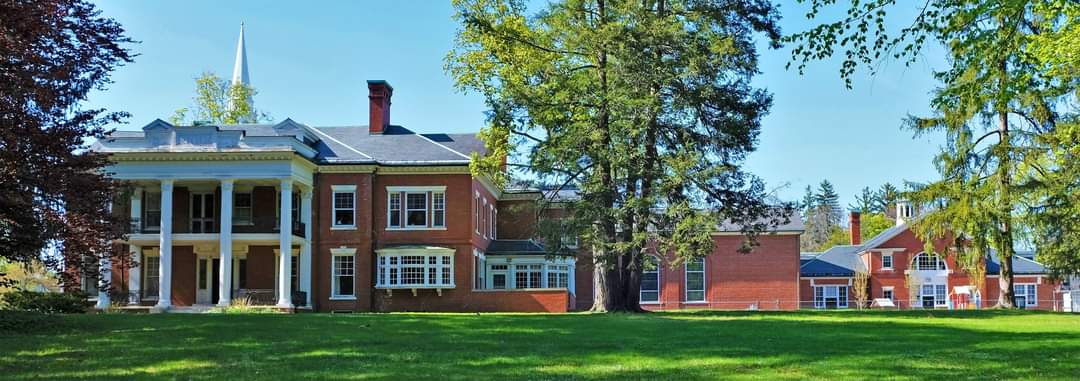
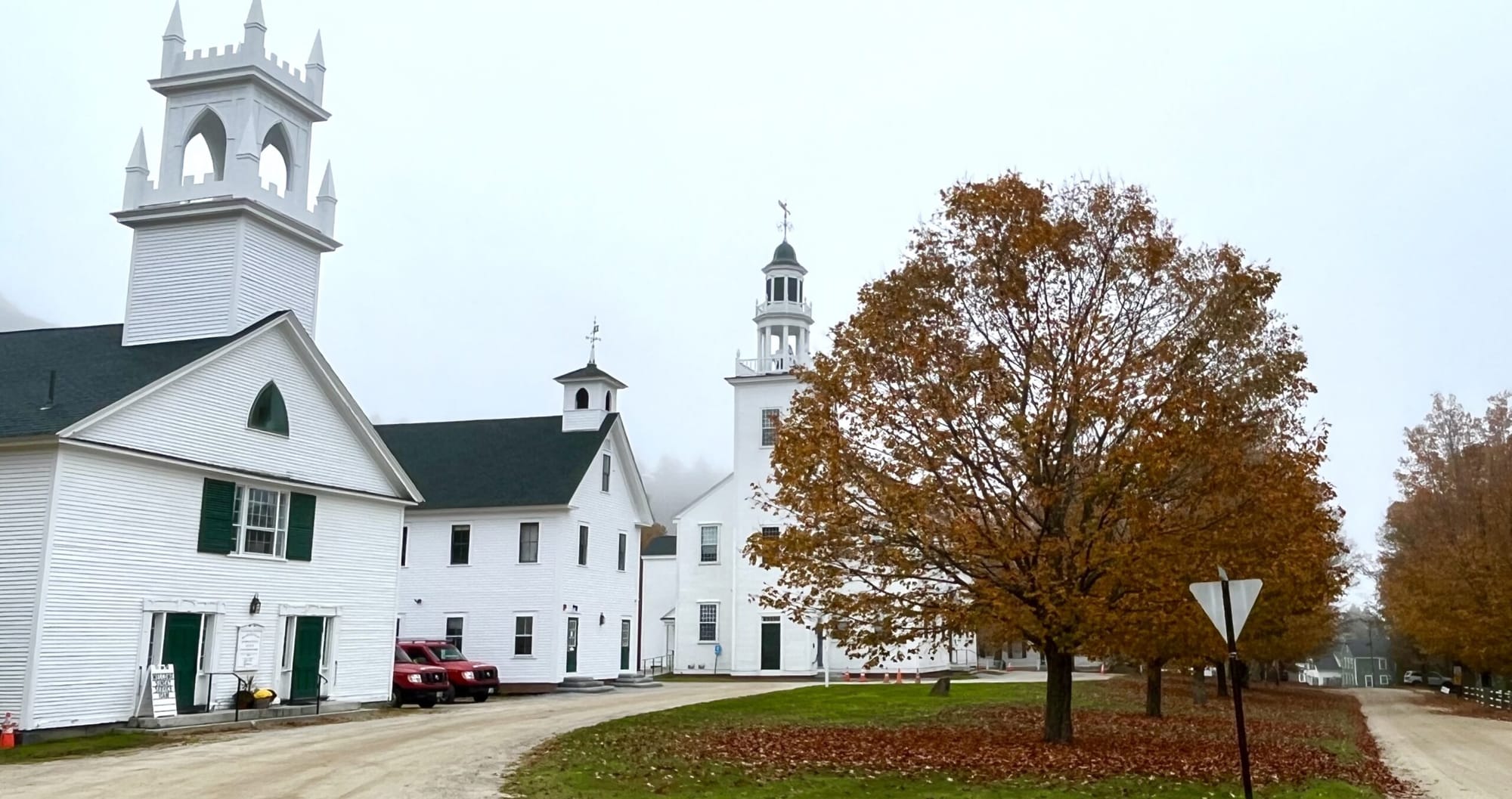
CONCORD, NH — Matching grants totaling $3.7 million will be shared by 25 land conservation and historic preservation projects across the state, the New Hampshire Land and Community Heritage Investment Program announced Monday.
The money will support efforts in all of the state’s 10 counties to rehabilitate 12 historic buildings and permanently preserve more than 4,300 acres of farm, timber and ecologically significant land. The 25 grant winners were chosen from 48 applicants that sought more than $7.3 million in funding.
Projects are in communities ranging from Manchester, where the Brookside Congregational Church’s Manning Carriage House repairs will get a boost with a $166,081 grant, to Washington, where the Washington Congregational Church on the town’s iconic common will get help from a $35,000 grant for window and exterior work.
Amounts awarded ranged from $300,000 each for town forest conservation projects in Gorham and Milan to $21,400 to help with repairs at the historic Plainfield Town Hall, one of NH Preservation Alliance’s 2023 Seven to Save.
The 2023 awards will be matched by more than $9.3 million contributed by other public and private sources, which will infuse $13 million into the state’s economy through direct project activity, LCHIP said in a news release. Grant recipients must match their award dollar-for-dollar as well as complete the project to meet LCHIP’s “rigorous standards.”
LCHIP is an independent state authority that provides matching grants to municipalities and nonprofits to help preserve historic and cultural elements of the state, while adding to the state’s economy. Since 2000, the authority has awarded 589 grants in 200 communities, worth $61 million, that have helped conserve more than 241,000 acres and rehabilitate 172 historic properties.
Gov. Chris Sununu, who joined LCHIP in Monday’s announcement, applauded the program for “making efficient use of a variety of funding sources to maximize community impact.”
LCHIP Executive Director Paula Bellemore stressed the wide-ranging importance of the projects that the program supports. “Our historic buildings and the landscapes that surround them connect us to our communities and provide us with a sense of place,” she said. “The historic buildings that LCHIP grants help rehabilitate are not just bricks and mortar, and the lands conserved are more than geology and topography. Our surroundings, both built and natural, connect us with who we are and what we value.”
She said that “building and strengthening that connection is a big part of what we do every day at LCHIP, because those connections are a big part of what makes New Hampshire special.”
The New Hampshire Preservation Alliance, which has provided grant and other support to several of this year’s LCHIP recipients, celebrated the awards in a separate news release.
“Historic preservation activity supports jobs, enhances the tax base, and helps spur additional investment,” the alliance said. “Because of the labor-intensive nature of rehabilitation, more money circulates in local economies than it does with new construction.”
The LCHIP release noted, however, that because the program had to turn down 23 applicants — only $3.7 million was available — some of those projects won’t be able to move forward, “leading to a possible loss of farm and recreational lands, and the very real possibility of permanent damage to historically significant buildings.”
Rising land conservation and historic preservation costs have led to a 50% increase in the amount of the average LCHIP grant request over the past five years, board Chair Ben Wilcox said. The cost increase “has made it more difficult for our board to award sufficient funds to grant applicants,” he said.
“It is satisfying to see our state communities working to preserve our natural, historic, and cultural heritage,” Wilcox, president and general manager of Cranmore Mountain Resort, said. He said that the LCHIP Board of Directors “is deeply appreciative” of the support the program gets from the legislature, but “in the years ahead, we will need to continue to find ways to enhance our funding to meet the needs our communities.”
Sununu said, “What’s great about LCHIP is that these are community-driven projects, with local people tackling supply chain issues and other challenges to get the job done. This is just a great program, and while the [American Rescue Plan Act] funds might go away, LCHIP is here to stay — it’s a program that just keeps getting better.”
NH Preservation is a funding partner for eight of the historic preservation grant recipients that received planning grants from the organization to prepare building assessments. Several other recipients received advice and technical assistance from staff. Among the LCHIP project that also got NH Preservation support are Mason’s 1848 town hall, listed in 2018 on the State Register of Historic Places, and a planning grant recipient; and Brookside Congregational Church in Manchester, which got help listing its 10-acre complex on the State Register and got a grant for a historic building assessment. Plainfield Town Hall was listed as a 2023 Seven to Save property.
“The Preservation Alliance is a proud partner of many of these important projects,” Andrew Cushing, of the NH Preservation Alliance, said. “Our accessible field service is designed to make opportunities like an LCHIP grant possible. We hope to continue our relationship with these communities through the completion of the project.”
LCHIP has an interactive map on its website that show all of the projects that have received grants since 2000 by town.
Receiving 2023 LCHIP grants (descriptions courtesy of LCHIP):
Bickford-Chesley House, Durham, $286,600 to the town to “support an extensive rehabilitation.” The 1804 Bickford-Chesley farmhouse, an outstanding example of Federal-era rural architecture, is part of Wagon Hill Farm. The farm activities that occurred on the expansive 139-acre site and at the Bickford-Chesley House reflect the continuum of agricultural history in New Hampshire.
Dover Friends Meetinghouse, Dover, $100,000 to Dover Friends for “significant structural repairs.” The 1768 Friends meetinghouse has been the center of social and political activity in Dover since its construction. It has long served as a community gathering place, beginning in the 1770s when the colonists came together to plan a response to British policies.
Durocher Farmland, Litchfield, $225,000 to the town to protect 60 acres along the Merrimack River featuring historic farmland, rolling fields, forest, and wetlands. The property abuts town conservation land and is an example of historic farmland and forest that is becoming increasingly rare in southern New Hampshire. Portions of the property are farmed by Alvirne High School students, a relationship that the town hopes to continue. Acquisition will preserve working farmland and natural resources, as well as offering passive recreational access to nearly 160 acres of contiguous accessible conservation land.
Dustin Conservation Easement, Hopkinton, $88,250 to the David and Kathleen Dustin Conservation Easement will protect 36 acres of land abutting the Warner River and add to two conserved parcels, forming a protected area of 314 acres. Support includes funding from the New Hampshire Drinking Water and Groundwater Trust Fund Source Water Protection Program. The land helps to protect the public water supply for the city of Concord and a private water supply in Contoocook. The father of the current landowner planted pine on part of the land as a 4-H project in the early 20th century. The town is collaborating with Five Rivers Conservation Trust, which will hold the conservation easement.
Effingham Library, Effingham, $172,000 to the town to support rehabilitation of the library and Old Town House, including restoring the six-story belltower, double doors, and upper story windows, along with insulating the ceiling and updating wiring. The project is part of a multi-year effort to rehabilitate the Italianate structure built in 1858 as the New England Masonic Charitable Institute, the only known boarding school sponsored by Freemasons. After the school closed, the first floor was town hall for more than a century, before the town converted it to the Effingham Public Library.
GMCG Natural Area Expansion, Effingham, $47,250 to the Green Mountain Conservation Group in support of acquisition of the 34-acre Thurston property on Route 25. The property is a critical wildlife corridor and link to conservation land on the northern slope of Green Mountain, the GMCG Natural Area and High Watch Preserve of the Forest Society. The acquisition expands the GMCG Natural Area to a 75-acre preserve that will allow nature trail expansion and improve public access. Effingham-based GMCG protects 2,600 acres in the Ossipee River Valley of eastern New Hampshire and western Maine, a region that lies above the Ossipee aquifer, the state’s largest stratified drift aquifer.
Gorham Town Forest Expansion, Gorham, $300,00, to the town in partnership with The Conservation Fund, to add 1,109 acres to the town forest, resulting in 6,876 acres managed by the community for sustainable forestry, wildlife habitat, education, public access, and drinking water protection. The expansion protects important wildlife habitat, including the Mascot Mine Hibernaculum, the state’s largest bat hibernaculum and home to endangered Northern Long Eared Bat. The property also has hiking trails, including the Carter Moriah Trail, once an alignment of the Appalachian Trail, which is a primary access to Mount Moriah. The expansion contributes to a vast and diversely conserved landscape across the Androscoggin Valley and is a capstone in the town’s efforts to develop recreational access for human-powered activities.
Little Red Schoolhouse, Wakefield, $36,960 to Wakefield Brookfield Historical Society to renovate one of the few remaining brick schoolhouses in the state. Built in 1858 for $1,000, the building was one of the most substantial schoolhouses in eastern New Hampshire and served students for more than 80 years. The building now needs serious renovation. The grant will help pay for structural work in the foundation and correcting masonry foundation deterioration caused by years of excessive moisture.
Littleton Community Center, Carriage Barn, Littleton, $100,000 to begin rehabilitation of the Carriage Barn, which was closed in 2011 because of moisture damage. The structure served as a meeting place for larger groups as part of the Littleton Community Center, which has been a community gathering place since 1919. The damaged understructure of the barn will be replaced and reinforced with steel and the barn will be placed on a new concrete slab.
Madison Chain of Ponds, Madison, $250,000 to Madison Upper Saco Valley Land Trust to conserve 625 acres comprising a chain of kettle ponds, bogs, and other wetlands that stretches nearly two miles and contains high-quality aquatic and upland forest habitats. Protection of the property will enhance adjoining conservation land, while preserving public access to outdoor recreation opportunities, including hiking, padding, hunting, and fishing. It will also protect more than 300 acres of mapped aquifer, and the headwaters of tributaries feeding the Saco River and Ossipee River.
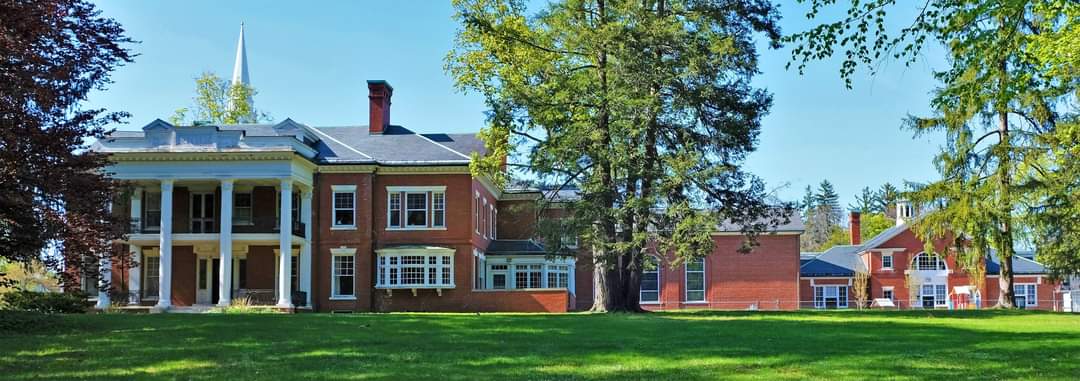
Manning House and Carriage House, Manchester, $166,081 to enable Brookside Congregational Church to complete preservation work on the mansion and barn, built in 1908 as a wedding gift for Mary Carpenter Manning from her father. Manning later gave the estate to the Franklin Street Congregational Church, which built a large new sanctuary on the property in 1960. Work will include repairing the slate roofs and associated copper, along with repointing chimneys and replacing flashing.
⇒WATCH Video tour of The Manning House
Mason Town Hall, Mason, $30,00 to the town for repairs on the historic Greek Revival 1838 town hall in the village center. Work will include repairing windows, strengthening the structure under the ground floor, and undoing changes in the attic that add to structural problems in the roof. Community leaders hope the repairs will allow town residents to enjoy greater public access to and use of the building.
Milan Community Forest, Milan, $300,000 to the town in partnership with The Conservation Fund, to add 900 acres to the community forest, resulting in more than 3,000 acres conserved by the forest, and satisfying phase three of an acquisition plan to create a climate-resilient conserved corridor across the town. The project will enhance local quality of life and economic wealth, protect critical wildlife habitat and water resources, provide educational opportunities, and ensure permanent protection of popular close-to-home recreational activities. Completing a conserved buffer around the Nansen Ski Jump, a nationally significant historic structure restored through local effort and used once again for ski jump competitions, the expansion also provides recreational connectivity for a Nordic trail connecting the jump to Milan Hill State Park. It will also advance Milan’s goal to create a critical corridor to connect existing conserved lands as recreational use and climate change attract people to area towns.
Moose Mountain Forest, Hanover, $250,000 to Hanover Conservancy to protect 140 acres of high-quality wildlife habitat on Moose Mountain. Abutting the federally protected Appalachian Trail corridor and the conservancy’s Mayor-Niles and Britton Forests, the project will add to a nearly 3,000-acre block of conserved land, strengthening a connected landscape that offers climate resilience. The property is also home to the headwaters of Mink Brook, the source of key brook trout habitat and providing flood security to Etna village and neighborhoods downstream. Public access is via historic Class VI Wolfeboro Road and Harris Trail.
Mount Jesse, Birch Ridge Community Forest, New Durham, $250,000 to Southeast Land Trust of NH, to conserve 606 acres in New Durham and Middleton, adding to SELT-owned 2,664-acre Birch Ridge Community Forest. The land includes forestland, blueberry barrens, streams, wildlife habitat, rare plants, and public recreation opportunities that are part of the eastern view from Merrymeeting Lake. With the completion of the Mount Jesse project, 49% of Merrymeeting Lake’s watershed will be conserved, an increase from 4% before 2018, when SELT and its partners began working to conserve the land. The project will also protect a two-mile section of Snowmobile Corridor 22 and connect Birch Ridge Community Forest to 5,400-acre Moose Mountains conservation area.
Oxbow Recreation Area, Holderness, $210,000 to the town to support acquisition of 243 acres along a mile of the Pemigewasset River. The recreation area will help preserve a large area of riverine habitat that is home to wood turtles, bank beavers, bald eagles, and a wide variety of birds, both local and transitory. The property has several oxbow wetlands where the Pemigewasset River previously flowed.
Plainfield Town Hall, Plainfield, $21,400 to help restore the 1798 building, moved and added to in 1846, and featuring a historic stage set design in its auditorium designed by artist Maxfield Parrish. The building was designated a 2023 Seven to Save by NH Preservation Alliance. The grant will help with repairing and repointing the building’s foundation, bringing its chimneys up to code, and regrading the surrounding area to ensure proper drainage and improve moisture control.
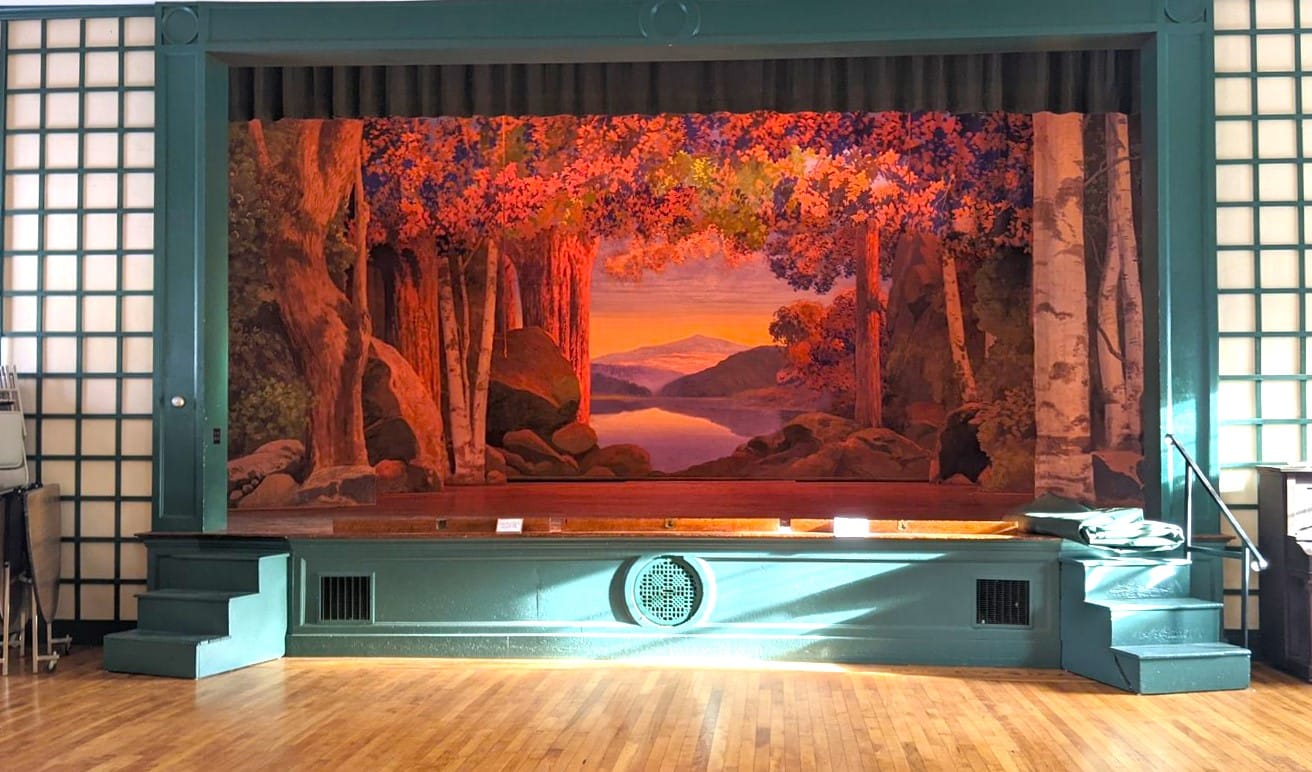
Rindge Second Meetinghouse, Rindge, $91,850 to the town to support preservation work at the 1796 Rindge Meetinghouse, which was modified in 1839 to facilitate separation of civil and religious functions. It remains one of only a few meetinghouses in New Hampshire still used by both town and church. It also helps define a village center, which includes other historic buildings, a common, and a cemetery. The funded work will focus on repairing the steeple, repainting the building, and repointing masonry.
Shillaber Conservation Easement, Farming and Strafford, $120,000 to Farmington Moose Mountains Regional Greenways in support of efforts to permanently conserve the 200-acre Shillaber property in the two towns through a conservation easement. The project is a collaboration between Farmington, Strafford, and Rochester, and supported by the Drinking Water and Groundwater Trust Fund Source Water Protection Program. The property features a 74-acre wetlands with an associated 5,000-plus feet of frontage on the Berry River, a primary source of drinking water for Rochester, and 126 acres of mature forestland. It also includes a parking area and two miles of trails for low-impact public recreation.
Simpson Conservation Easement, Ossipee and Tuftonboro, $45,000 to Ossipee Moose Mountains Regional Greenways to permanently conserve 35 acres in the two towns through a conservation easement. The property features mature forests, old field habitat, and is a valuable buffer for Garland Pond and the abutting Garland Pond Wildlife Management Area.
Sugar Bush Farm, Goffstown, $150,000 to The Forest Society, which is working to conserve the historic property along the General John Stark Scenic Byway (Route 13). The grant will help acquire a 53-acre conservation easement on the property. One of the last farms in the area, the property has 18 acres of open hayfield and more than 20 acres of forest. Conserving the property will add to more than 300 acres of surrounding existing conservation land.
Swain Family Farm, Sanbornton, $250,000 to the Lakes Region Conservation Trust to acquire an agricultural land easement on the 320-acre property, which has been a landmark in Sanbornton and a continuously operating farm since the 1800s. The easement will help support the farm’s long-term viability, ensure that the land remains available for productive agriculture and forestry, and permanently protect the land’s habitat, recreational, and scenic values. The farm property includes pastures and hayfields, cropland, a maple sugaring operation, forested lands used by the public for hiking and hunting, and shoreline on Hunkins Pond, where fishing by the public is a long-standing tradition. Travelers along Hunkins Pond Road and farm visitors enjoy spectacular views of the Lakes Region from the farm’s fields.
Washington Congregational Church, Washington, $35,000 to restore historic windows and repair and paint the exterior of the 1840 church, which is a cornerstone of historic Washington Town Common. The church is listed on the National Register of Historic Places.
Wentworth-Gardner Warehouse, Portsmouth, $48,103 to the Wentworth-Gardner Historic House Association to help preserve one of two surviving 18th-century warehouses in Portsmouth. Built in 1760 and part of the Portsmouth Downtown Historic District, the building is an example of the once-common vernacular structures that helped generate Portsmouth’s mercantile wealth. Work will include repairs to the windows, shakes, doors, trim, sills, and foundation.
Westmoreland Town Hall, Westmoreland, $128,800 to make repairs to the building, which has been used as a town hall since it was constructed in 1917. Town halls of this period were intended to house town offices and to accommodate civic activities, and it is a well-preserved example of this 20-century building trend. The two-story building still has town offices on the first floor and a large auditorium on the second floor with a stage and balcony. Work will include repairs to windows, plaster walls, and tin ceilings.


